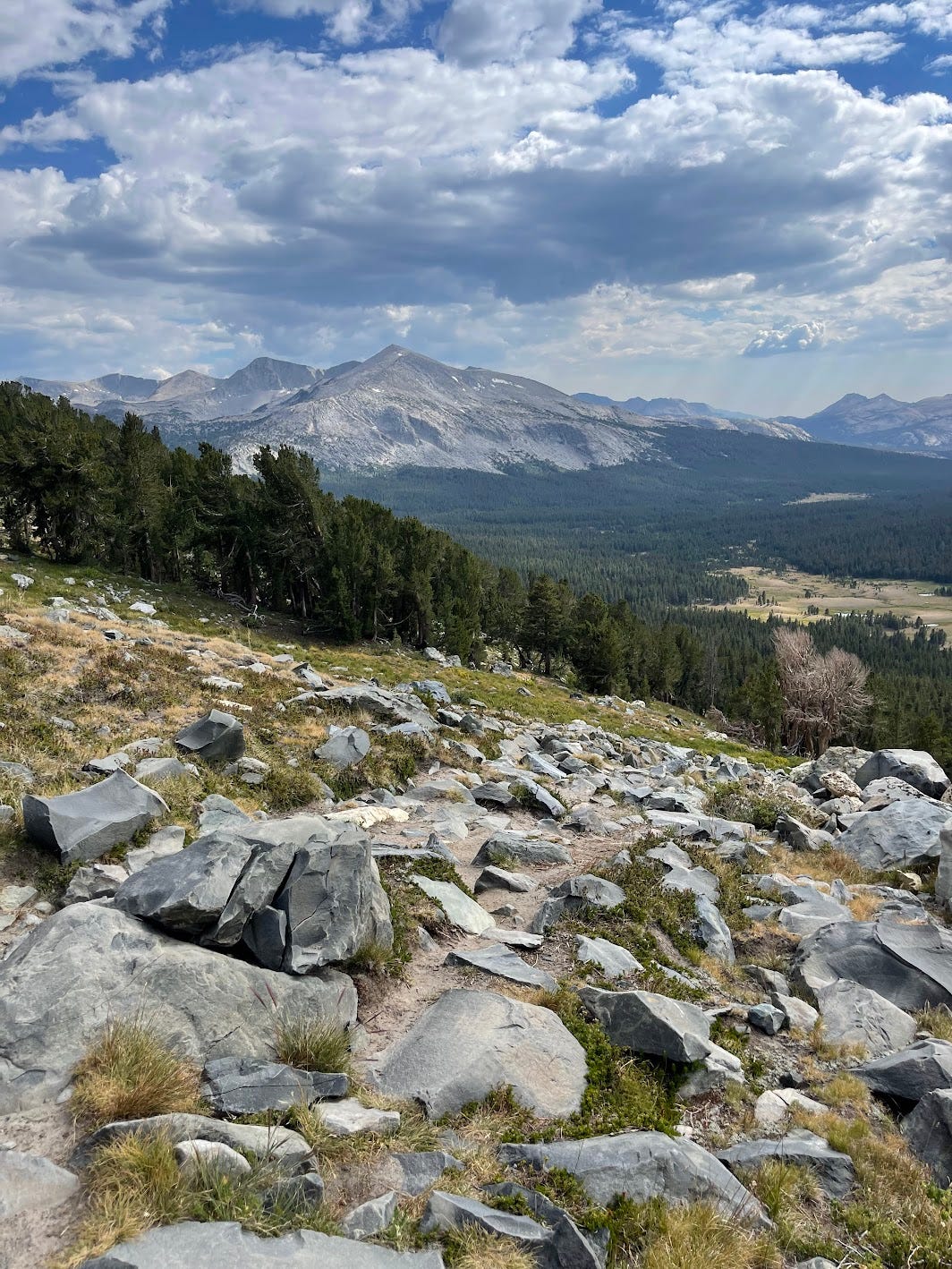Essential Attributes of an Exceptional Beginner Backpacking Trail
What essential attributes to look for on your first backpack trail.
This post walks you through what to look for when picking a trail on your first backpacking trip.
On the first trip, it's unlikely you will be in charge of planning; however, it's helpful to know what to look out for so you can ask the right questions to the trip leader.
In addition, I've also added suggestions on how to broach different topics with an experienced friend planning the trip. As J.K. Rowling put it, "it takes a great deal of bravery to stand up…to our friends."
Bias for Exciting
When I pick a backpacking trip, first and foremost, I choose an exciting trail. When we do boring activities, we usually don't do them again.
Many beginner backpacking guides advocate for a 1-2 mile trail near home. I agree with doing a hike to test gear in preparation for a trip. However, for the first trip, do something exciting.
Worried the trip will be challenging? Use this post to avoid getting tired and for ideas on how to have fun on the trail.
To figure out what exciting looks like, think about the top 2-5 goals for the trail. Do we want to see something particular on the trip (e.g., lakes, animals, landmarks)? Do we want to be able to do any specific activities on the trail (e.g., swim, rock hop, star gaze, take photos, summit a peak)?
If nothing comes to mind, think about the opposite; what would make the trip miserable (e.g., bears, mosquitos, humidity, heat, cliffs)?
Once we figure out what exciting means, ask friends or an outdoor group if they have suggestions. I use phrases like “nice-to-haves” or “preferences” to put less pressure on finding a route that meets all the criteria.
Max 2 Nights
I suggest going for a maximum of 2 nights. The timeframe is long enough to get a taste of backpacking and short enough that it will be over quickly if it's horrible.
If a friend thinks a 2-night trip is short, mention that you are worried you won't like backpacking and don't want them to be stuck with an unhappy person. At the very least, they will know what they are in for on the trip.
50-70% of a Regular Hike
Next, pick a trail that is ~50-70% of the miles of comfortable hiking.
The percentage should change based on the following:
Elevation gain (Aim for ~50% of what you normally do or expect to go a lot slower)
Altitude (~10,000 ft of elevation you will likely have shortness of breadth)
Loaded backpack weight
Ease of trail finding
Trail grade (How steep is the trail?)
Trail surface (Are you walking on rocks, sand, logs, mud, water, or dirt?)
Exposure to elements (How sunny will it be? Will there be a lot of mosquitos?)
Your friend will likely be more experienced and want a big trail. I like being encouraged outside my comfort zone, but it's not fun at a certain point. For backpacking, if a trail feels too big, tell the friend that you read online about XYZ features that make it hard and that beginners should aim for 50% of what they are comfortable hiking.
6-8 hours of Hiking per Day
Plan on hiking for ~6-8 hours each day.
There are many online calculators and algorithms for hiking and backpacking to calculate the amount of time.
One quick algorithm I’d recommend based on Naismith's Rule is 30 minutes for every mile plus 1 hour for every 1,000 feet of elevation gain. For example, if Day 1 is 8 miles and 2,000 ft of elevation gain, that's 4 hours (2 hours plus 2 hours).
As I mentioned above, many other attributes play into difficulty, so plan for more time or less time accordingly.
REI Recommendations
REI Backpacking for Beginners is an excellent article with more recommendations for picking trails. I copied & pasted my favorites from their post:
Pick a well-traveled trail and well-established camp: It’s nice to have hikers and backcountry campers nearby who can give you a hand if you run into difficulties.
Make sure there’s water near camp: If your source will be a lake or large river, you should be fine. Streams and springs can dry up, though, so double check with local land managers before relying on a small water source.
Seek summer weather: Unless your destination is one where extreme heat or fire danger can be an issue, go in mid-summer to maximize daylight hours and your odds of comfortable conditions. Always check weather forecasts and don’t hesitate to cancel or turn back if a storm moves in.
Consider “walk-in” campgrounds: Some state and national parks have campgrounds that are within a mile or so of a car campground. Staying in one of them is an excellent way to transition into backpacking.
However, I think it’s worth taking their advice with a grain of salt. For example, if you are excited about a trail with a chance of rain or a less popular trail, plan and pack for it.

